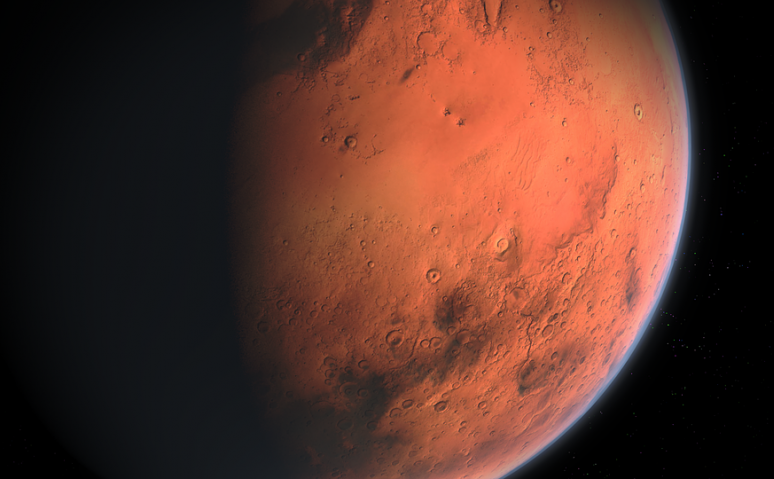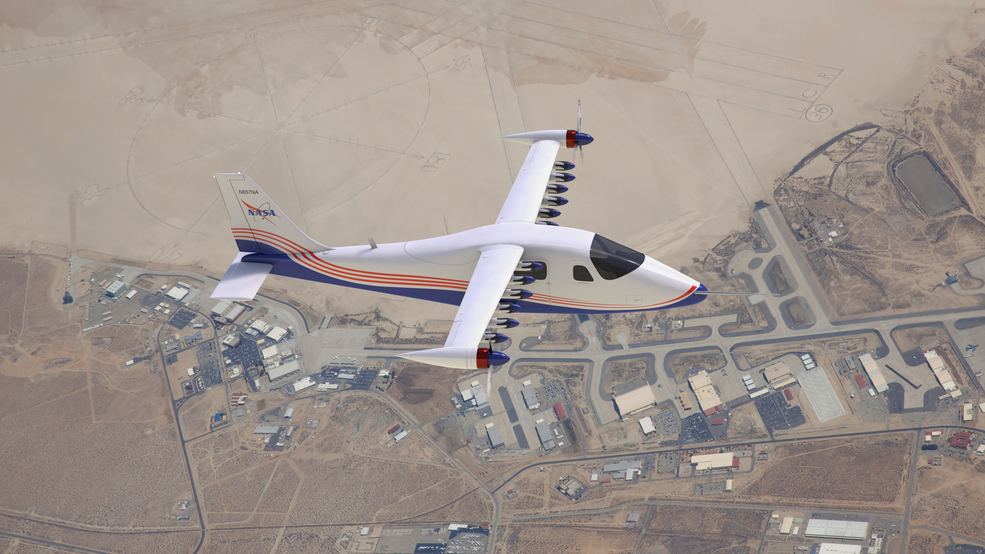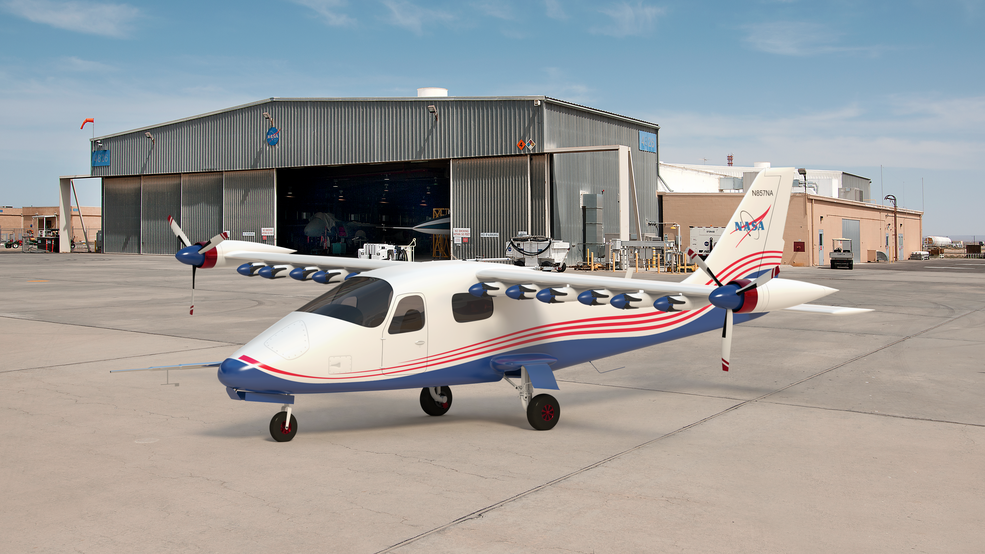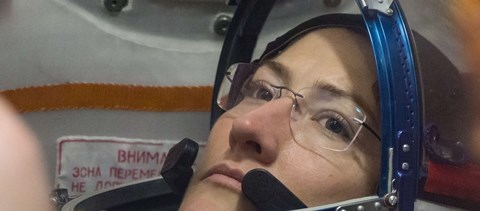Array
(
[count_posts] => 4
[cache_key] => Query_Posts::global::hu::YTo1OntzOjQ6ImxhbmciO3M6MjoiaHUiO3M6NzoiZG9tYWlucyI7YToxOntpOjA7czo0OiJsaWZlIjt9czo2OiJvZmZzZXQiO2k6NTA7czo5OiJ0YXhfcXVlcnkiO2E6MTp7aTowO2E6Mzp7czo4OiJ0YXhvbm9teSI7czo4OiJwb3N0X3RhZyI7czo1OiJmaWVsZCI7czoyOiJpZCI7czo1OiJ0ZXJtcyI7YToxOntpOjA7aToyMTg1O319fXM6MTE6ImFmdGVyTG9ja2VyIjtpOjA7fQ==
[has_result] => 1
[posts] => Array
(
[0] => Array
(
[id] => 10961
[content] =>
Gyorsan változó sarkvidékeink sokféleségét és törékenységét rögzítette a NASA IceBridge művelete. Az említett területek a bolygónk egyik legkevésbé lakható, de annál inkább lélegzetelállító helyei.
Dőljön hátra, és kövesse nyomon a sarkvidéki régiók jelenlegi helyzetét, Grönland nyugati részétől az Antarktiszig.
A videó figyelemre méltó látványosságai között szerepel a Pine Island-gleccser, a Larsen C jégself és a nyugat-grönlandi jégtáblák meghökkentő ütemű olvadása.
[type] => post
[excerpt] => Gyorsan változó sarkvidékeink sokféleségét és törékenységét rögzítette a NASA IceBridge művelete. Az említett területek a bolygónk egyik legkevésbé lakható, de annál inkább lélegzetelállító helyei.
[autID] => 5
[date] => Array
(
[created] => 1586802840
[modified] => 1586739614
)
[title] => NASA: Videón a sarkvidékek szépségei (Videó)
[url] => https://life.karpat.in.ua/?p=10961&lang=hu
[status] => publish
[translations] => Array
(
[hu] => 10961
[uk] => 11053
)
[aut] => gygabriella
[lang] => hu
[image_id] => 10967
[image] => Array
(
[id] => 10967
[original] => https://life.karpat.in.ua/wp-content/uploads/2020/04/sarkvidek.jpg
[original_lng] => 124422
[original_w] => 1238
[original_h] => 593
[sizes] => Array
(
[thumbnail] => Array
(
[url] => https://life.karpat.in.ua/wp-content/uploads/2020/04/sarkvidek-150x150.jpg
[width] => 150
[height] => 150
)
[medium] => Array
(
[url] => https://life.karpat.in.ua/wp-content/uploads/2020/04/sarkvidek-300x144.jpg
[width] => 300
[height] => 144
)
[medium_large] => Array
(
[url] => https://life.karpat.in.ua/wp-content/uploads/2020/04/sarkvidek-768x368.jpg
[width] => 768
[height] => 368
)
[large] => Array
(
[url] => https://life.karpat.in.ua/wp-content/uploads/2020/04/sarkvidek-1024x490.jpg
[width] => 1024
[height] => 490
)
[1536x1536] => Array
(
[url] => https://life.karpat.in.ua/wp-content/uploads/2020/04/sarkvidek.jpg
[width] => 1238
[height] => 593
)
[2048x2048] => Array
(
[url] => https://life.karpat.in.ua/wp-content/uploads/2020/04/sarkvidek.jpg
[width] => 1238
[height] => 593
)
[full] => Array
(
[url] => https://life.karpat.in.ua/wp-content/uploads/2020/04/sarkvidek.jpg
[width] => 1238
[height] => 593
)
)
)
[video] =>
[comments_count] => 0
[domain] => Array
(
[hid] => life
[color] => red
[title] => Життя
)
[_edit_lock] => 1586803519:3
[_oembed_4af66a8e8b18b813e5c59f2a7e42e1cb] => ? Hello, #Starliner! @BoeingSpace's human-rated spacecraft has arrived at the International @Space_Station for the first time, docking at 8:28pm ET (00:28 UTC). pic.twitter.com/gXceiHJhuB
— NASA (@NASA) May 21, 2022
[_oembed_time_7338a46efbfb0e136e60f4f5efdf5dac] => 1654810229
[_oembed_8507a802bcd8a211015f165011b0bff8] => Teams at @NASAKennedy have assessed impacts from Hurricane Ian & determined there was no damage to #Artemis I flight hardware.
@NASA will focus on the Nov. 12-27 launch period to give employees time for post-storm recovery & identify checkouts for launch https://t.co/bjDiRgnOvt pic.twitter.com/7nK2tKVDOR
— NASA Artemis (@NASAArtemis) September 30, 2022
[_oembed_time_699a9949b6c91160e850e493e8805212] => 1665160157
[_oembed_41753a0d6302dd74e6569aab6aaedf09] => Orion's Optical Navigation Camera captured these stunning views of the lunar surface during our flyby on #Artemis flight day 20. pic.twitter.com/mfTL5ZSPSp
— Orion Spacecraft (@NASA_Orion) December 7, 2022
[_oembed_time_41753a0d6302dd74e6569aab6aaedf09] => 1671189706
[_oembed_c67e1c0263f09077c80d9fc457c0feca] => The imagery we continue to get out of @NASA_Orion's onboard cameras is outstanding. Downlinked the lunar fly-by photos yesterday, and they are incredible - a few of my favorites below. Visit https://t.co/ZrjE1SVAWC to see the rest. pic.twitter.com/5KXDF3PsLq
— Jim Free (@JimFree) December 7, 2022
[_oembed_time_c67e1c0263f09077c80d9fc457c0feca] => 1671189706
[_oembed_30289a69c4d7f7f6ef6d4ffb3c78045a] => We've been tracking a new asteroid named 2023 DW that has a very small chance of impacting Earth in 2046. Often when new objects are first discovered, it takes several weeks of data to reduce the uncertainties and adequately predict their orbits years into the future. (1/2) pic.twitter.com/SaLC0AUSdP
— NASA Asteroid Watch (@AsteroidWatch) March 7, 2023
[_oembed_time_3a3b4b728bce09709458b7df793900f0] => 1679963109
[_oembed_b17ac91756745e69382f928dd2bb3301] => Splashdown!#Crew5 is back on Earth, completing a science mission of nearly six months on the @Space_Station. Their @SpaceX Dragon Endurance spacecraft touched down at 9:02pm ET (0202 UTC March 12) near Tampa off the coast of Florida. pic.twitter.com/nLMC0hbKY4
— NASA (@NASA) March 12, 2023
[_oembed_time_b17ac91756745e69382f928dd2bb3301] => 1680276261
[_oembed_57590107d0d3da5f85a713767ccf2dba] => NASA just released the clearest view of Mars ever. (sound of Mars)
pic.twitter.com/XNIYJ0f15R
— Science (@ScienceGuys_) June 17, 2024
[_oembed_time_f9ae9abb0d4fce11c520b492a5fcd1c5] => 1722560794
[_oembed_399ad795235db89e01f77babb17efbf2] => 
Folytatódnak a Hold- és Mars-missziók előkészületei az amerikai űrkutatási hivatalnál (NASA)
A NASA Artemis-programja keretében tovább folyik a munka, amely az asztronauták Holdra és a Marsra utazását készíti elő – mondta Jim Bridenstine, a NASA igazgatója csütörtökön.
A program szerint 2024-ben küldenének ismét amerikai asztronautákat a Holdra, több mint 50 évvel azután, hogy az ember először lépett az égitestre.
„Azután, hogy húsz éven át keringtek űrhajósaink földközeli pályán, most készen állunk a világűr újabb nagy kihívására: a fenntartható emberi jelenlét feltételeinek kifejlesztésére a Holdon és körülötte” – idézte Bridenstine szavait a NASA portálja.
„Az elkövetkező években az Artemis lesz a Sarkcsillagunk, miközben a Hold még teljesebb felfedezése felé haladunk. A Holdon fogjuk megmutatni, milyen alapvető elemekre lesz szükség az első űrhajósok marsi missziójához” – folytatta.
A NASA szerint a fenntartható holdi jelenlét fő eleme a mobilitás, az ügynökség ezért be fog mutatni egy holdjárót. A teljesen lakhatónak tervezett holdjáróval a legénység akár 45 napos utazásokat is tehet az égitest felszínén. Rövidebb tartózkodásra egy négyfős csapatnak alkalmas felszíni lakóhelyet terveznek.
Az Artemis-program a Holdat a Naprendszer távolabbi vidékeinek felfedezését előkészítő tesztterületként akarja használni.
Forrás: hirado.hu
[type] => post
[excerpt] => Folytatódnak a Hold- és Mars-missziók előkészületei az amerikai űrkutatási hivatalnál (NASA) a koronavírus-járvány ellenére is.
[autID] => 4
[date] => Array
(
[created] => 1585999800
[modified] => 1585958816
)
[title] => Nem állnak le az amerikai Hold- és Mars-utazások előkészületei
[url] => https://life.karpat.in.ua/?p=10012&lang=hu
[status] => publish
[translations] => Array
(
[hu] => 10012
[uk] => 10174
)
[aut] => avecsorinszka
[lang] => hu
[image_id] => 10013
[image] => Array
(
[id] => 10013
[original] => https://life.karpat.in.ua/wp-content/uploads/2020/04/mars-pixabay.png
[original_lng] => 464462
[original_w] => 774
[original_h] => 479
[sizes] => Array
(
[thumbnail] => Array
(
[url] => https://life.karpat.in.ua/wp-content/uploads/2020/04/mars-pixabay-150x150.png
[width] => 150
[height] => 150
)
[medium] => Array
(
[url] => https://life.karpat.in.ua/wp-content/uploads/2020/04/mars-pixabay-300x186.png
[width] => 300
[height] => 186
)
[medium_large] => Array
(
[url] => https://life.karpat.in.ua/wp-content/uploads/2020/04/mars-pixabay-768x475.png
[width] => 768
[height] => 475
)
[large] => Array
(
[url] => https://life.karpat.in.ua/wp-content/uploads/2020/04/mars-pixabay.png
[width] => 774
[height] => 479
)
[1536x1536] => Array
(
[url] => https://life.karpat.in.ua/wp-content/uploads/2020/04/mars-pixabay.png
[width] => 774
[height] => 479
)
[2048x2048] => Array
(
[url] => https://life.karpat.in.ua/wp-content/uploads/2020/04/mars-pixabay.png
[width] => 774
[height] => 479
)
[full] => Array
(
[url] => https://life.karpat.in.ua/wp-content/uploads/2020/04/mars-pixabay.png
[width] => 774
[height] => 479
)
)
)
[video] =>
[comments_count] => 0
[domain] => Array
(
[hid] => life
[color] => red
[title] => Життя
)
[_edit_lock] => 1586097200:8
[_thumbnail_id] => 10013
[_edit_last] => 5
[translation_required] => 2
[views_count] => 3915
[_oembed_f80eaf3212b9ba4326c4e6cb8474c2fa] => SpaceX is building floating, superheavy-class spaceports for Mars, moon & hypersonic travel around Earth https://t.co/zLJjz43hKw
— Elon Musk (@elonmusk) June 16, 2020
[_oembed_time_5a3f341fa3d000f2b50d698c48c64d13] => 1593903069
[_oembed_be41a6b151027fd40a71dd9df58be85e] => Please tell me we can still get close enough to see them launch. It’ll be such a shame if there can’t be a giant crowd gathered to witness history ? pic.twitter.com/0io1cC4yk2
— Everyday Astronaut (@Erdayastronaut) June 16, 2020
[_oembed_time_7eea109c46813c16120b3cb489a6c407] => 1593903070
[_oembed_802ba214cf74c16af58dea70ba331c57] => What's the current target for the first Earth to Earth flights?
— Viv ? (@flcnhvy) June 16, 2020
[_oembed_time_802ba214cf74c16af58dea70ba331c57] => 1593903070
[_oembed_bccd5506cb11f48ed3543a74395c45c0] => {{unknown}}
[_oembed_c012754b540ea8610472b53342192e18] => China National Space Administration releases latest high-definition Mars images taken and sent back by #Zhurong, the country's first Mars rover. #Tianwen1 #Tianwen #祝融 #天问 pic.twitter.com/64wVWYs8jF
— WatchTower (@WatchTowerGW) June 11, 2021
[_oembed_time_69c7a6f3422bc2baabcc41024424858a] => 1624415937
[_oembed_7c07626aad80315cbfe968a9319c2b22] => Oh, this is amazing. Close to tears. Ourspace has published an update on the "mystery hut" and it's so underwhelming it's brilliant. It's just a small rock on a crater rim that they're now calling "jade rabbit" for its appearance. Source: https://t.co/frrMKH7RWM https://t.co/GFCIRzqmDu pic.twitter.com/jpDLDS8TZu
— Andrew Jones (@AJ_FI) January 7, 2022
[_oembed_time_7c07626aad80315cbfe968a9319c2b22] => 1643577100
[_oembed_7338a46efbfb0e136e60f4f5efdf5dac] => ? Hello, #Starliner! @BoeingSpace's human-rated spacecraft has arrived at the International @Space_Station for the first time, docking at 8:28pm ET (00:28 UTC). pic.twitter.com/gXceiHJhuB
— NASA (@NASA) May 21, 2022
[_oembed_time_7338a46efbfb0e136e60f4f5efdf5dac] => 1654668609
[_oembed_8507a802bcd8a211015f165011b0bff8] => Teams at @NASAKennedy have assessed impacts from Hurricane Ian & determined there was no damage to #Artemis I flight hardware.
@NASA will focus on the Nov. 12-27 launch period to give employees time for post-storm recovery & identify checkouts for launch https://t.co/bjDiRgnOvt pic.twitter.com/7nK2tKVDOR
— NASA Artemis (@NASAArtemis) September 30, 2022
[_oembed_time_699a9949b6c91160e850e493e8805212] => 1666534796
[_oembed_41753a0d6302dd74e6569aab6aaedf09] => Orion's Optical Navigation Camera captured these stunning views of the lunar surface during our flyby on #Artemis flight day 20. pic.twitter.com/mfTL5ZSPSp
— Orion Spacecraft (@NASA_Orion) December 7, 2022
[_oembed_time_41753a0d6302dd74e6569aab6aaedf09] => 1671382668
[_oembed_c67e1c0263f09077c80d9fc457c0feca] => The imagery we continue to get out of @NASA_Orion's onboard cameras is outstanding. Downlinked the lunar fly-by photos yesterday, and they are incredible - a few of my favorites below. Visit https://t.co/ZrjE1SVAWC to see the rest. pic.twitter.com/5KXDF3PsLq
— Jim Free (@JimFree) December 7, 2022
[_oembed_time_c67e1c0263f09077c80d9fc457c0feca] => 1671382668
[_oembed_30289a69c4d7f7f6ef6d4ffb3c78045a] => Splashdown!#Crew5 is back on Earth, completing a science mission of nearly six months on the @Space_Station. Their @SpaceX Dragon Endurance spacecraft touched down at 9:02pm ET (0202 UTC March 12) near Tampa off the coast of Florida. pic.twitter.com/nLMC0hbKY4
— NASA (@NASA) March 12, 2023
[_oembed_time_b17ac91756745e69382f928dd2bb3301] => 1678965819
[_oembed_3a3b4b728bce09709458b7df793900f0] => We've been tracking a new asteroid named 2023 DW that has a very small chance of impacting Earth in 2046. Often when new objects are first discovered, it takes several weeks of data to reduce the uncertainties and adequately predict their orbits years into the future. (1/2) pic.twitter.com/SaLC0AUSdP
— NASA Asteroid Watch (@AsteroidWatch) March 7, 2023
[_oembed_time_3a3b4b728bce09709458b7df793900f0] => 1678965819
[_oembed_57590107d0d3da5f85a713767ccf2dba] => Japan's 'Moon Sniper' probe attempts historic soft-landing on lunar surface. But did it make it? https://t.co/gOXn5EHViM pic.twitter.com/nubTr6hXg6
— SPACE.com (@SPACEdotcom) January 19, 2024
[_oembed_time_14b1e1b6e4a236b4ff4ed4943ee02393] => 1706715121
[_oembed_3d7e63d625b87d7786a8690ae29ddd1c] => NASA just released the clearest view of Mars ever. (sound of Mars)
pic.twitter.com/XNIYJ0f15R
— Science (@ScienceGuys_) June 17, 2024
[_oembed_time_f9ae9abb0d4fce11c520b492a5fcd1c5] => 1720877219
[_oembed_fe4db60f7a6fafd99783aee7b80d4da0] => Japan's 'Moon Sniper' probe attempts historic soft-landing on lunar surface. But did it make it? https://t.co/gOXn5EHViM pic.twitter.com/nubTr6hXg6
— SPACE.com (@SPACEdotcom) January 19, 2024
[_oembed_time_fe4db60f7a6fafd99783aee7b80d4da0] => 1720877219
[_oembed_440574682d7908d345f472dfaf912003] => Falcon 9 launches 21 @Starlink satellites to low-Earth orbit from Florida pic.twitter.com/PoDEjGYGSM
— SpaceX (@SpaceX) August 28, 2024
[_oembed_time_440574682d7908d345f472dfaf912003] => 1726830382
[_oembed_399ad795235db89e01f77babb17efbf2] => Megjelentek az első képek a NASA X–57 Maxwell névre hallgató repülőjéről, amely teljesen elektromos, 500 százalékkal hatékonyabb, mint egy a hagyományos gép, és az alacsonyabb zajszennyezés mellett a károsanyag-kibocsátást is nullára redukálja.

(Fotó: NASA) Az X-57 Maxwell lesz az utóbbi két évtizedben az első NASA által gyártott, legénységgel ellátott repülő. Célja, hogy elősegítse a jövőbeli elektromos légi járművek szabványainak kidolgozását – írta a Daily Mail.
A NASA gépe egy négyüléses Tecnam P2006T hagyományos könnyű repülőnek indult, melynek dugattyús rotorjait 12 elektromos motor váltotta fel.
A NASA szerint az X57 Maxwell különleges, vékony szárnyakkal rendelkezik, amelyek a légellenállás csökkentésével növelik a repülési hatékonyságot, míg az energiát újratölthető lítium-ion akkumulátorok biztosítják a gépen.

(Fotó: NASA) A légi járművet a NASA mérnökei, kutatói, pilótái, képzőművészei és egyéb munkakörben dolgozó alkalmazottai együtt fejlesztették ki. A koncepcióképek pedig nem a végső gépet, hanem a művészek által megálmodott repülőt ábrázolják.
A NASA szerint, ha elkészül, az X-57 Maxwell 500 százalékkal hatékonyabb lehet, mint a hagyományos repülőgépek, míg az alacsonyabb zajszennyezés mellett a károsanyag-kibocsátása is nulla lesz.
[type] => post
[excerpt] => Megjelentek az első képek a NASA X–57 Maxwell névre hallgató repülőjéről, amely teljesen elektromos, 500 százalékkal hatékonyabb, mint egy a hagyományos gép, és az alacsonyabb zajszennyezés mellett a károsanyag-kibocsátást is nullára redukálja.
[autID] => 5
[date] => Array
(
[created] => 1585507980
[modified] => 1585481258
)
[title] => A NASA bemutatta környezetbarát repülőjét
[url] => https://life.karpat.in.ua/?p=9323&lang=hu
[status] => publish
[translations] => Array
(
[hu] => 9323
[uk] => 9379
)
[aut] => gygabriella
[lang] => hu
[image_id] => 9324
[image] => Array
(
[id] => 9324
[original] => https://life.karpat.in.ua/wp-content/uploads/2020/03/nasa-repcsi-1.png
[original_lng] => 1021067
[original_w] => 985
[original_h] => 554
[sizes] => Array
(
[thumbnail] => Array
(
[url] => https://life.karpat.in.ua/wp-content/uploads/2020/03/nasa-repcsi-1-150x150.png
[width] => 150
[height] => 150
)
[medium] => Array
(
[url] => https://life.karpat.in.ua/wp-content/uploads/2020/03/nasa-repcsi-1-300x169.png
[width] => 300
[height] => 169
)
[medium_large] => Array
(
[url] => https://life.karpat.in.ua/wp-content/uploads/2020/03/nasa-repcsi-1-768x432.png
[width] => 768
[height] => 432
)
[large] => Array
(
[url] => https://life.karpat.in.ua/wp-content/uploads/2020/03/nasa-repcsi-1.png
[width] => 985
[height] => 554
)
[1536x1536] => Array
(
[url] => https://life.karpat.in.ua/wp-content/uploads/2020/03/nasa-repcsi-1.png
[width] => 985
[height] => 554
)
[2048x2048] => Array
(
[url] => https://life.karpat.in.ua/wp-content/uploads/2020/03/nasa-repcsi-1.png
[width] => 985
[height] => 554
)
[full] => Array
(
[url] => https://life.karpat.in.ua/wp-content/uploads/2020/03/nasa-repcsi-1.png
[width] => 985
[height] => 554
)
)
)
[video] =>
[comments_count] => 0
[domain] => Array
(
[hid] => life
[color] => red
[title] => Життя
)
[_edit_lock] => 1585554956:3
[_thumbnail_id] => 9324
[_edit_last] => 5
[translation_required] => 2
[views_count] => 3790
[_oembed_f80eaf3212b9ba4326c4e6cb8474c2fa] => ? Hello, #Starliner! @BoeingSpace's human-rated spacecraft has arrived at the International @Space_Station for the first time, docking at 8:28pm ET (00:28 UTC). pic.twitter.com/gXceiHJhuB
— NASA (@NASA) May 21, 2022
[_oembed_time_7338a46efbfb0e136e60f4f5efdf5dac] => 1653466896
[_oembed_84247bc80d9921d8f82d99e4f32a7ebf] => Teams at @NASAKennedy have assessed impacts from Hurricane Ian & determined there was no damage to #Artemis I flight hardware.
@NASA will focus on the Nov. 12-27 launch period to give employees time for post-storm recovery & identify checkouts for launch https://t.co/bjDiRgnOvt pic.twitter.com/7nK2tKVDOR
— NASA Artemis (@NASAArtemis) September 30, 2022
[_oembed_time_699a9949b6c91160e850e493e8805212] => 1665561541
[_oembed_8507a802bcd8a211015f165011b0bff8] => Orion's Optical Navigation Camera captured these stunning views of the lunar surface during our flyby on #Artemis flight day 20. pic.twitter.com/mfTL5ZSPSp
— Orion Spacecraft (@NASA_Orion) December 7, 2022
[_oembed_time_41753a0d6302dd74e6569aab6aaedf09] => 1672443319
[_oembed_c67e1c0263f09077c80d9fc457c0feca] => The imagery we continue to get out of @NASA_Orion's onboard cameras is outstanding. Downlinked the lunar fly-by photos yesterday, and they are incredible - a few of my favorites below. Visit https://t.co/ZrjE1SVAWC to see the rest. pic.twitter.com/5KXDF3PsLq
— Jim Free (@JimFree) December 7, 2022
[_oembed_time_c67e1c0263f09077c80d9fc457c0feca] => 1672443319
[_oembed_30289a69c4d7f7f6ef6d4ffb3c78045a] => We've been tracking a new asteroid named 2023 DW that has a very small chance of impacting Earth in 2046. Often when new objects are first discovered, it takes several weeks of data to reduce the uncertainties and adequately predict their orbits years into the future. (1/2) pic.twitter.com/SaLC0AUSdP
— NASA Asteroid Watch (@AsteroidWatch) March 7, 2023
[_oembed_time_3a3b4b728bce09709458b7df793900f0] => 1680014389
[_oembed_b17ac91756745e69382f928dd2bb3301] => Splashdown!#Crew5 is back on Earth, completing a science mission of nearly six months on the @Space_Station. Their @SpaceX Dragon Endurance spacecraft touched down at 9:02pm ET (0202 UTC March 12) near Tampa off the coast of Florida. pic.twitter.com/nLMC0hbKY4
— NASA (@NASA) March 12, 2023
[_oembed_time_b17ac91756745e69382f928dd2bb3301] => 1681021680
[_oembed_57590107d0d3da5f85a713767ccf2dba] => Just tried out @Adobe #Photoshop's new #GenerativeAI Fill on my all-time favorite memes - extended the POV to see what's beyond the frames.
Enjoy the thread ? (The white frame represents the original size of the meme.) #ai #aiart #aiartcommunity #GenerativeFill pic.twitter.com/vXqs5yFdnS
— ST3U ⚡️?? (@StepnEurope) May 30, 2023
[_oembed_time_ebe766813cec8c0955d915ab882e04a3] => 1686151233
[_oembed_e02ac65f153a9de93cbee9bc2534027d] => NASA just released the clearest view of Mars ever. (sound of Mars)
pic.twitter.com/XNIYJ0f15R
— Science (@ScienceGuys_) June 17, 2024
[_oembed_time_f9ae9abb0d4fce11c520b492a5fcd1c5] => 1720596192
[_oembed_399ad795235db89e01f77babb17efbf2] => 
Christina Koch alig töltött kevesebb napot a Nemzetközi Űrállomás (ISS) fedélzetén, mint az amerikai rekorder Scott Kelly. Kazahsztánban ért Földet két társával. 328 nap. Pontosan ennyit töltött a világűrben – a Nemzetközi Űrállomás fedélzetén – a NASA űrhajósa, Christina Koch, aki küldetése során több rekordot is felállított. Koch csütörtökön ért Földet, a visszatérés sikeres volt.
Koch a maga 328 napos küldetésével a második legtöbb időt az űrben töltő űrhajóssá vált. Őt csak Scott Kelly előzi meg az amerikaiak között, aki 2015-16-ban összesen 340 napig tartózkodott a Nemzetközi Űrállomáson. A nők között viszont övé az elsőség, a korábbi rekorder a szintén a NASA kötelékében szolgáló Peggy Whitson volt, aki 2017-ben 289 napot húzott le az ISS-en.
Koch nevéhez azonban nemcsak ez a rekord fűződik: Jessica Meir űrhajóssal közösen ők hajtották végre az első olyan űrsétát, amelyben csak nők vettek részt. Az októberi küldetés során az állomás akkumulátorait cserélték ki.
Koch az európai Luca Parmitanóval – aki nemrég megsütötte az első csokis kekszet az űrben –, valamint az orosz Alexander Szkvorcovval együtt landolt a Földön. A Szojuz MS-13 fedélzetén Kazahsztánban szálltak le, ahonnan egy orvosi létesítménybe vitték őket, hogy elvégezzék az ilyenkor szükséges vizsgálatokat és beavatkozásokat.
A NASA űrhajósa a küldetése 328 napja alatt 5248 alkalommal kerülte meg a Földet az ISS fedélzetén, amivel összesen 223,7 millió kilométert tett meg. Ebből nagyjából 291-szer jönne ki a Föld-Hold-Föld utazás. Munkája során több mint 210 kísérletet végzett el, miközben ő maga is kísérlet volt, a NASA ugyanis megfigyelte, miként reagál a szervezet, ha sokáig van az űrben.
SpaceX is building floating, superheavy-class spaceports for Mars, moon & hypersonic travel around Earth https://t.co/zLJjz43hKw
— Elon Musk (@elonmusk) June 16, 2020
[_oembed_time_5a3f341fa3d000f2b50d698c48c64d13] => 1593208080
[_oembed_be41a6b151027fd40a71dd9df58be85e] => Please tell me we can still get close enough to see them launch. It’ll be such a shame if there can’t be a giant crowd gathered to witness history ? pic.twitter.com/0io1cC4yk2
— Everyday Astronaut (@Erdayastronaut) June 16, 2020
[_oembed_time_7eea109c46813c16120b3cb489a6c407] => 1593208081
[_oembed_802ba214cf74c16af58dea70ba331c57] => What's the current target for the first Earth to Earth flights?
— Viv ? (@flcnhvy) June 16, 2020
[_oembed_time_802ba214cf74c16af58dea70ba331c57] => 1593208081
[_oembed_c012754b540ea8610472b53342192e18] => China National Space Administration releases latest high-definition Mars images taken and sent back by #Zhurong, the country's first Mars rover. #Tianwen1 #Tianwen #祝融 #天问 pic.twitter.com/64wVWYs8jF
— WatchTower (@WatchTowerGW) June 11, 2021
[_oembed_time_69c7a6f3422bc2baabcc41024424858a] => 1624212728
[_oembed_7c07626aad80315cbfe968a9319c2b22] => Oh, this is amazing. Close to tears. Ourspace has published an update on the "mystery hut" and it's so underwhelming it's brilliant. It's just a small rock on a crater rim that they're now calling "jade rabbit" for its appearance. Source: https://t.co/frrMKH7RWM https://t.co/GFCIRzqmDu pic.twitter.com/jpDLDS8TZu
— Andrew Jones (@AJ_FI) January 7, 2022
[_oembed_time_7c07626aad80315cbfe968a9319c2b22] => 1642602064
[_oembed_7338a46efbfb0e136e60f4f5efdf5dac] => ? Hello, #Starliner! @BoeingSpace's human-rated spacecraft has arrived at the International @Space_Station for the first time, docking at 8:28pm ET (00:28 UTC). pic.twitter.com/gXceiHJhuB
— NASA (@NASA) May 21, 2022
[_oembed_time_7338a46efbfb0e136e60f4f5efdf5dac] => 1654368597
[_oembed_8507a802bcd8a211015f165011b0bff8] => Teams at @NASAKennedy have assessed impacts from Hurricane Ian & determined there was no damage to #Artemis I flight hardware.
@NASA will focus on the Nov. 12-27 launch period to give employees time for post-storm recovery & identify checkouts for launch https://t.co/bjDiRgnOvt pic.twitter.com/7nK2tKVDOR
— NASA Artemis (@NASAArtemis) September 30, 2022
[_oembed_time_699a9949b6c91160e850e493e8805212] => 1668927791
[_oembed_41753a0d6302dd74e6569aab6aaedf09] => Orion's Optical Navigation Camera captured these stunning views of the lunar surface during our flyby on #Artemis flight day 20. pic.twitter.com/mfTL5ZSPSp
— Orion Spacecraft (@NASA_Orion) December 7, 2022
[_oembed_time_41753a0d6302dd74e6569aab6aaedf09] => 1672180789
[_oembed_c67e1c0263f09077c80d9fc457c0feca] => The imagery we continue to get out of @NASA_Orion's onboard cameras is outstanding. Downlinked the lunar fly-by photos yesterday, and they are incredible - a few of my favorites below. Visit https://t.co/ZrjE1SVAWC to see the rest. pic.twitter.com/5KXDF3PsLq
— Jim Free (@JimFree) December 7, 2022
[_oembed_time_c67e1c0263f09077c80d9fc457c0feca] => 1672180789
[_oembed_30289a69c4d7f7f6ef6d4ffb3c78045a] => Splashdown!#Crew5 is back on Earth, completing a science mission of nearly six months on the @Space_Station. Their @SpaceX Dragon Endurance spacecraft touched down at 9:02pm ET (0202 UTC March 12) near Tampa off the coast of Florida. pic.twitter.com/nLMC0hbKY4
— NASA (@NASA) March 12, 2023
[_oembed_time_b17ac91756745e69382f928dd2bb3301] => 1680436805
[_oembed_3a3b4b728bce09709458b7df793900f0] => We've been tracking a new asteroid named 2023 DW that has a very small chance of impacting Earth in 2046. Often when new objects are first discovered, it takes several weeks of data to reduce the uncertainties and adequately predict their orbits years into the future. (1/2) pic.twitter.com/SaLC0AUSdP
— NASA Asteroid Watch (@AsteroidWatch) March 7, 2023
[_oembed_time_3a3b4b728bce09709458b7df793900f0] => 1680436805
[_oembed_57590107d0d3da5f85a713767ccf2dba] => Japan's 'Moon Sniper' probe attempts historic soft-landing on lunar surface. But did it make it? https://t.co/gOXn5EHViM pic.twitter.com/nubTr6hXg6
— SPACE.com (@SPACEdotcom) January 19, 2024
[_oembed_time_14b1e1b6e4a236b4ff4ed4943ee02393] => 1706539397
[_oembed_3d7e63d625b87d7786a8690ae29ddd1c] => Japan's 'Moon Sniper' probe attempts historic soft-landing on lunar surface. But did it make it? https://t.co/gOXn5EHViM pic.twitter.com/nubTr6hXg6
— SPACE.com (@SPACEdotcom) January 19, 2024
[_oembed_time_fe4db60f7a6fafd99783aee7b80d4da0] => 1720114265
[_oembed_f9ae9abb0d4fce11c520b492a5fcd1c5] => NASA just released the clearest view of Mars ever. (sound of Mars)
pic.twitter.com/XNIYJ0f15R
— Science (@ScienceGuys_) June 17, 2024
[_oembed_time_f9ae9abb0d4fce11c520b492a5fcd1c5] => 1721742124
[_oembed_440574682d7908d345f472dfaf912003] => Falcon 9 launches 21 @Starlink satellites to low-Earth orbit from Florida pic.twitter.com/PoDEjGYGSM
— SpaceX (@SpaceX) August 28, 2024
[_oembed_time_440574682d7908d345f472dfaf912003] => 1726394955
[_oembed_c559bf7eb89b1e09c09c39578407027e] =>
NASA (6 Oldal)











